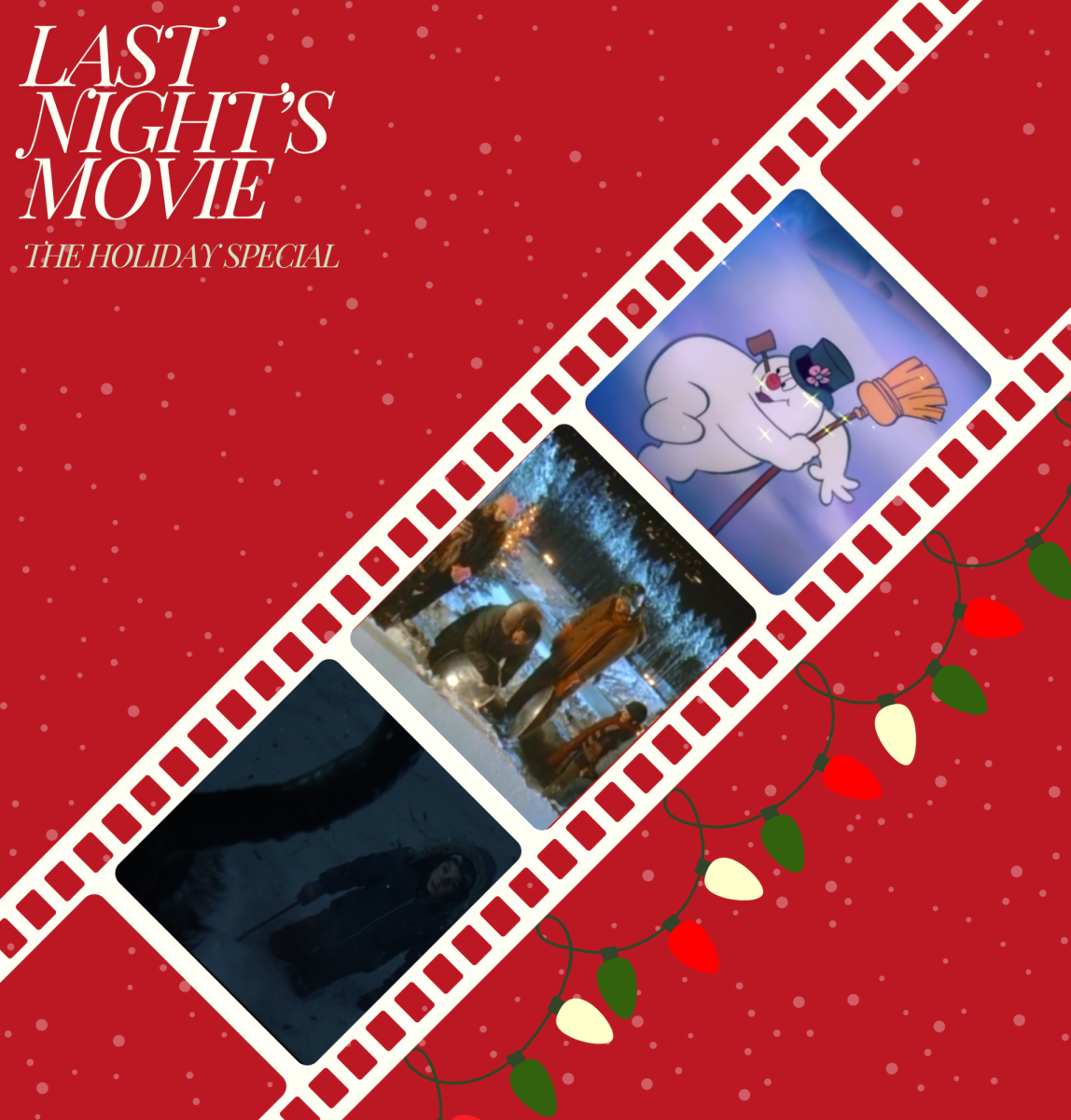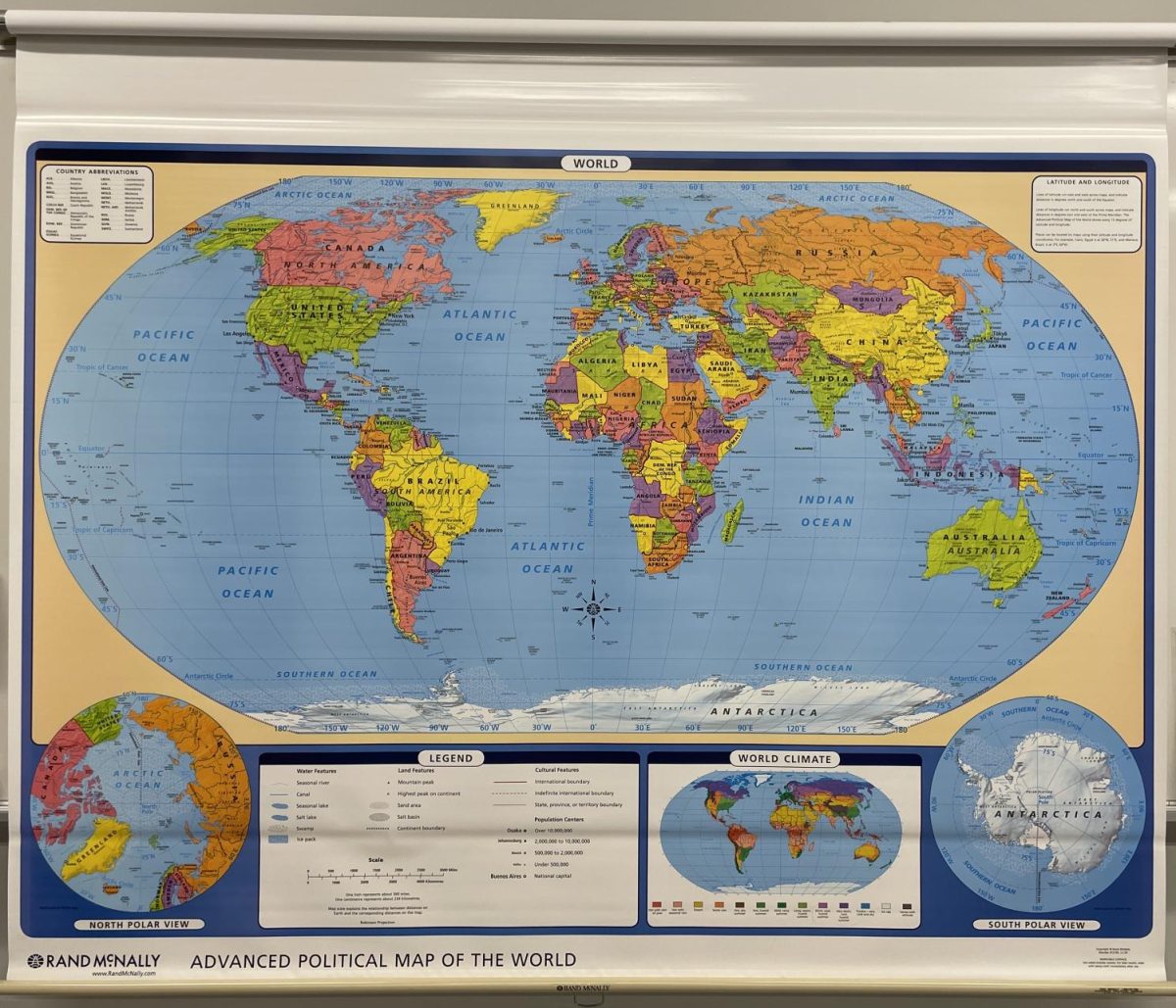There is no shortage of holiday movies, no matter what genre or tropes a person prefers. In honor of this massive variation, we decided to try our hand at three entirely different–but still ‘holiday’–movies. One from the ‘classics’, one from the ‘comedies’ and, of course, one from the ‘horror’ side of the season.
“Frosty the Snowman” (1969)
Being a classic, “Frosty the Snowman” is practically rolling in nostalgia. Almost everyone knows the little jingle of “thumpity-thump-thump, thumpity-thump-thump, look at Frosty go”, whether they want to or not. Good old Frosty may not be the epitome of film, but he’s made a lasting impact on peoples’ perception of the holiday season.
For those who may have missed the last few decades, “Frosty the Snowman” is a 22-minute-long adventure starring a walking, talking snowman…and what else? How could we forget: his name is Frosty. Shortly after coming into existence, Frosty runs into a big problem; the man whose hat sits on top of his snowy head wants it back…only, it’s the very thing that gives Frosty life. With the help of the town’s rowdy children–and maybe a certain ho-ho-ho-ing man in red–Frosty must find a way to keep himself from melting and losing his magic. And he might as well share the meaning of Christmas while he’s at it.
And another problem: the cold of winter that allows Frost to walk and talk–as snowmen do–is coming to an end. On top of the struggles Frosty is facing while trying to escape an angry amateur magician, he must also journey to the eternal cold of the North Pole.
The TV special illustrates the “true” meaning of the holidays: joy, gratitude, the gift of giving and believing in a little bit of magic. Thankfully, it does all this with much more grace than a few other classics that haven’t aged nearly as well (for example, “Rudolph the Red Nosed Reindeer” or “Santa Claus is Comin’ to Town”). It’s perfect for both kids and adults who just want to sit in the magic of this time of year, though it may not be nearly entertaining enough to keep them (kids in particular) occupied. However, with its short duration, “Frosty” is easy to sit through whether its style is to one’s taste or not. Either way, we have to give Frosty a break; the kids in the 60’s were a lot different than those today. For example, adding heavy, exaggerative sound effects every few scenes just doesn’t get a laugh like it used to. And most kids today don’t know what a traffic cop even is.
What might actually get a laugh are the style choices. Again, they’re fine for their time, but are now in desperate need of an update. We have a feeling that kids watching “Frosty the Snowman” in the current century will find it dull, not unlike how many of us felt when forced to watch old TV programs in black and white with grandparents. However, for those kids who can see past the animation that definitely shows the state of the technology at the time–and the oftentimes outdated sense of humor–“Frosty the Snowman” is a holiday classic.
“National Lampoon’s Christmas Vacation” (1989)
Relatable, charming and full of laughs; “National Lampoon’s Christmas Vacation” is amazingly still relevant nearly 40 years after its release. The movie follows the Griswold family as they try to live up to their dad’s hopes for a “fun old-fashioned family Christmas” despite the series of misfortunes that befall them along the way (including visiting relatives).
This movie’s strong suits are its cast (Chevy Chase in the lead) and its dialogue. As any good family comedy should, it draws its audience in with likeable characters and unexpected, goofy scenarios. It also has that slightly-outdated quality to it that makes it feel authentic through its faults. Maybe that’s why it’s so much of a better time than most of the holiday movies popping up across streaming services now (aka Netflix Original Christmas movies). Like an old house that just needs a little cleaning: it has character.
Not only this, but the characters’ interactions, developments and relationships were realistic. Too often, teenage characters are depicted in a way that is terribly unrealistic. While the characters of Audrey and Russ were not accurate to every teenager, the essence of the teenage experience shined through them. The depiction of relationships with in-laws who don’t take too much liking to their child’s relationship and family members who aren’t favorites was spot-on in its realism. Not to mention that the actors in these roles did a fantastic job in their portrayals–even the youngest ones.
That being said, it’s far from perfect. A few of the jokes got old as the movie progressed, and even others were just “old” to begin with. We also felt the pacing was a little strange, though ultimately it didn’t affect much. In spite of these minor issues, we had fun watching it, and decided that it basically encapsulates the idea of an “American Christmas,” as well as the favorite flick of the season.
“Krampus” (2015)
“Christmas”’ and “horror” mesh together surprisingly well in this horror/comedy. Centered around the legend itself, “Krampus” tells exactly what happens when families can’t muster enough cheer in time for the holidays (hint: they get a lot worse than lumps of coal in their stockings).
Though comedy-horror mixes have been known to leave a funny (and not ha-ha funny) taste in peoples’ mouths, “Krampus” somehow avoids this unease and apprehension entirely. The horror is scary, but more importantly: interesting; and the humor blends in nicely with the traits of the main characters. Speaking of the characters, this movie also has some fairly famous actors on its cast list. Adam Scott (“Parks and Recreation”), Toni Collette (“Hereditary”) and David Koechner (“Anchorman: The Legend of Ron Burgundy”) all play an integral role in the film.
Characters aside, the most important part of the movie is, of course, the mythical figure it is based on. European folklore really comes alive in “Krampus.” Not to spoil anything for future viewers, but whoever was in charge of the design and costumes deserves a pretty serious raise. We were pleasantly surprised by the amount of effort put in, not just into Krampus, but everything that comes with him (according to legend, anyway). It made the movie feel much more real, and a whole lot less campy.
Obviously, these three movies are only a small percentage of all of the holiday ones out there, but we did our best to get a good variety to represent the collective. If we’ve learned anything from this experience, it’s that there’s a holiday movie out there for everyone. Except those who choose to believe that “The Nightmare Before Christmas” and “Die Hard” are Christmas movies; considering they’re wrong, they get nothing.










